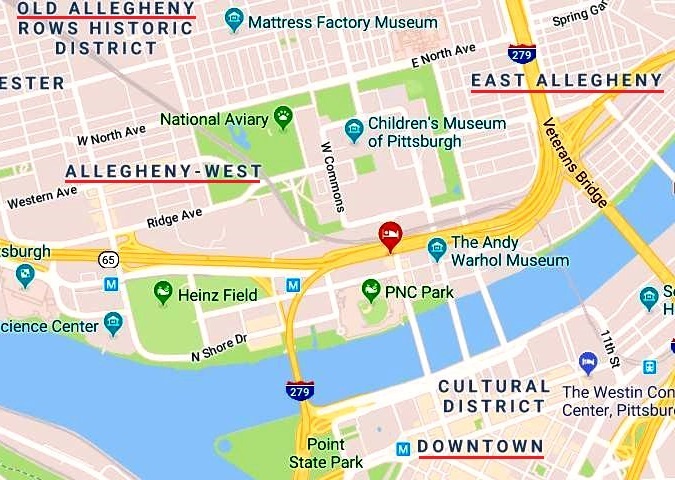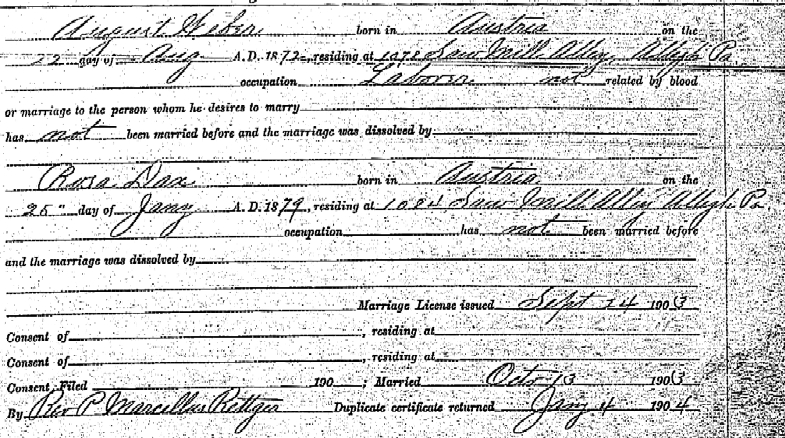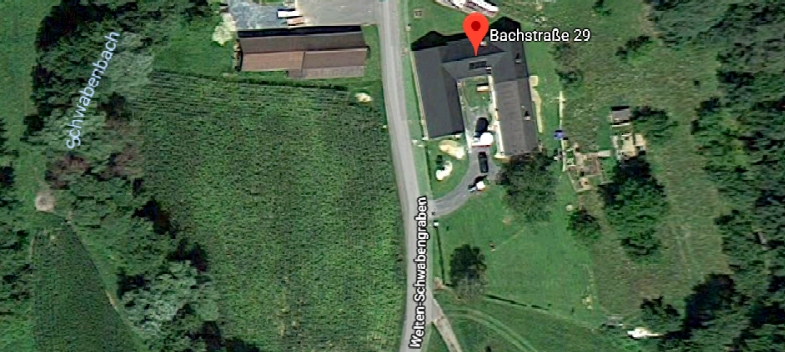|
The
|
||||||||||||||||||||||||||||
THE BURGENLAND BUNCH NEWS - No. 286 April 30, 2018, © 2018 by The Burgenland Bunch All rights reserved. Permission to copy excerpts granted if credit is provided. Editor: Thomas Steichen (email: tj.steichen@comcast.net) BB Home Page: the-burgenland-bunch.org BB Newsletter Archives: BB Newsletter BB Facebook Page: TheBurgenlandBunchOFFICIAL Our 22nd year. The Burgenland Bunch Newsletter is issued monthly online. It was founded by Gerald Berghold (who retired from the BB in the Summer of 2008 and died in August 2008). |
||||||||||||||||||||||||||||
| Current Status Of The BB: * Members: 2618 * Surname Entries: 8300 * Query Board Entries: 5726 * Staff Members: 15 |
||||||||||||||||||||||||||||
|
||||||||||||||||||||||||||||
1) THE PRESIDENT'S CORNER (by Tom Steichen)  This
month's collection of bits and pieces in Article 1 tells us of the
passing of a respected Burgenland historian, speaks (four times!) of available Austro-Burgenland
records, requests that Southern-Burgenländers fill out a questionnaire and reports a BB staff
member resignation, along with a number of other things! This
month's collection of bits and pieces in Article 1 tells us of the
passing of a respected Burgenland historian, speaks (four times!) of available Austro-Burgenland
records, requests that Southern-Burgenländers fill out a questionnaire and reports a BB staff
member resignation, along with a number of other things!Article 2 is by Richard Potetz, who writes about both the benefits of shared Family Trees on FamilySearch.org and the necessity for Pruning when collaborators make incorrect family connections. He explains why errors occur and provides his strategy for correcting these problems. Speaking of collaborations, Article 3 is by Frank Paukowits and Jane Horvath, who jointly write about Using the Chromosome Browser and “Hot” DNA Segments to Identify Distant Cousin Matches. The Chromosome Browser is a tool on the FamilyTreeDNA site that allows users to visualize and document where shared DNA segments lie. Using that data, along with knowledge of "Hot" DNA segments (places where DNA mutates frequently) and their "Cold" counterparts (places of infrequent mutation), can provide clues for identifying more-distant cousins. Article 4 is one actually authored by me, in which I discuss a recent effort at assisting a new member. While we had good success in finding data about his maternal side, the paternal side proved humbling. It only goes to show that Not All Research is Easy. The remaining articles are our standard sections: Historical Newsletter Articles, and the Ethnic Events and Emigrant Obituaries sections. 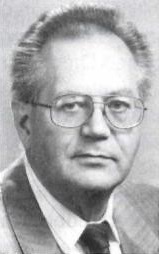 Burgenland
Historian, Dr. Harald Prickler, has Died: ORF News ran a short article this past
month reporting that the historian, Dr. Harald Prickler, died Sunday, April 8th, at the age of
84. He was born in Lutzmannsburg in 1934 but moved to Vienna at age 12 to advance his education,
having been recognized by his teachers as extraordinarily intelligent. Harald studied History
and English at the University of Vienna and piano at the conservatory of the city of
Vienna, obtaining a Ph.D. in 1957. His research focus was the history of Burgenland / West
Hungary. He worked for years in the Burgenland State Archives and also as a member of the
Institute for Austrian Historical Research. Burgenland
Historian, Dr. Harald Prickler, has Died: ORF News ran a short article this past
month reporting that the historian, Dr. Harald Prickler, died Sunday, April 8th, at the age of
84. He was born in Lutzmannsburg in 1934 but moved to Vienna at age 12 to advance his education,
having been recognized by his teachers as extraordinarily intelligent. Harald studied History
and English at the University of Vienna and piano at the conservatory of the city of
Vienna, obtaining a Ph.D. in 1957. His research focus was the history of Burgenland / West
Hungary. He worked for years in the Burgenland State Archives and also as a member of the
Institute for Austrian Historical Research. As a historian, he published numerous books and articles (a 2004 listing documented 209 books and articles at that time), such as: -- Eisenstadt: building blocks of history, the 350th anniversary of the elevation to a Free City. (1998) -- Commemorative Volume. 750 years winegrowing community Lutzmannsburg. A contribution to the Middle-Burgenland winegrowing history. (1968) -- Castles and Palaces, Ruins and Fortified Churches in Burgenland. (1972) -- Course and consequences of the Bocskay rebellion in the Austro-Hungarian border area. (1972) -- Sovereign symbols of the Croatian communities of Burgenland. Signets, seals, coats of arms, community colors. (1997) 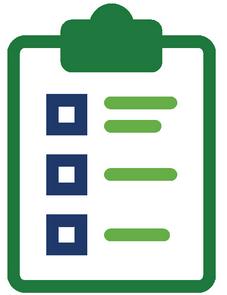 Request
to Fill Out A Burgenland Emigration-Related Questionnaire: We received a request from Anna
Stranzl, a Burgenland college student at the University of Vienna, who has an online
questionnaire that she asks BB members with southern-Burgenland roots (from districts
Oberwart, Güssing and Jennersdorf) to fill out. I've looked over the questionnaire and find
nothing intrusive. As it is a good cause, I recommend that you assist Anna by taking the few
minutes needed to complete her questionnaire. Request
to Fill Out A Burgenland Emigration-Related Questionnaire: We received a request from Anna
Stranzl, a Burgenland college student at the University of Vienna, who has an online
questionnaire that she asks BB members with southern-Burgenland roots (from districts
Oberwart, Güssing and Jennersdorf) to fill out. I've looked over the questionnaire and find
nothing intrusive. As it is a good cause, I recommend that you assist Anna by taking the few
minutes needed to complete her questionnaire.Anna writes: Dear Burgenland Bunch community, my name is Anna Sophie Stranzl. I am 23 years old and I am from Hagensdorf (district of Güssing) and I am in the teacher training programme at the University of Vienna (subjects: English and History). Just like so many Burgenländers, I have relatives in the US and in Canada, and this is why it has always been a topic of interest for me. My American relatives are from my paternal grandmother’s side and their last name was Gasper; they were from Deutsch Ehrensdorf and emigrated to the US some time after the First World War, where they settled down in the Allentown area. My Canadian relatives are from my paternal grandfather’s side (my grandfather’s brother); his name is Josef Stranzl and he is from Urbersdorf; he emigrated to Canada in the 1950s and his family lives in the Toronto area. I am currently writing my diploma thesis on the following topic: “The inter-war emigration to North America of southern Burgenländers and their ties to their home country up until today.” For this purpose, I would like to ask you to fill out a questionnaire, which will not take longer than 10 minutes. All contributions from Southern-Burgenländers (even if you did not emigrate in the inter-war period) are highly appreciated! Links to the questionnaire: Long link: https://docs.google.com/forms/d/e/1FAIpQLSeQiUYu4WYZ8DBb-0FTvvB4mfSRXXQ4PZykP5rl4JNLsq3vRg/viewform?usp=sf_link Short link: https://goo.gl/forms/yOTnVHTc2hI44M0R2 Information on Early Austrian Genealogical Records: The following are selected paragraphs translated from Genealogie (Genealogy) by Leopold Strenn, found at austria-forum.org/.../Leopold_Strenn_Genealogie. While most of this should not be new information to long-time readers of this newsletter, it adds some detail and repeats useful knowledge. An essential source for genealogy are the matrices (baptism, marriage and death books) of the religious communities. In the Catholic Church, the Council of Trent in 1563 first prescribed the establishment of marriage registries. Commitment to the application of death books, confirmation books and family books was carried out by the Roman Ritual in 1614. The oldest matrices in Austria are those of the parish of St. Stephen in Vienna (1523), Matrei in East Tyrol (1558), Grieskirchen in Upper Austria (1568), Klagenfurt St. Egid in Carinthia (1571), the Salzburg Dompfarre (1575), Wilhelmsburg in Lower Austria (1579), the parish house in Styria (1586), Lingenau in Vorarlberg (1594) and the cathedral and city parish Eisenstadt (1614). However, the matriculation system in the Austrian states does not have comprehensive coverage until the beginning of the 17th century. In recent years, interest in genealogy in Austria has grown rapidly. The increasing digitization of archive holdings has contributed to this. A pioneer in the field of digitization of church records was the diocesan archives of St. Polten. There, the project "Matricula" (http://data.matricula-online.eu/de) was initiated in 2008. Through this platform, the matrices of all Roman Catholic dioceses in Austria, with the exception of Burgenland, as well as access to the Tiroler Landesarchiv (https://www.tirol.gv.at/kunst-kultur/landesarchiv/matriken-tirol-online) are on the Internet for free. Parallel to this development was the collection of genealogical data. For example, project GenTeam (www.genteam.eu), the largest such online database in Austria, has 17.4 million entries and is used by more than 39,800 genealogists and historians (as of Feb 2018). Why We Wait for Online Early Burgenland Records: For some time, I have been writing about the pending digitization of the early Burgenland Catholic Church records... and my every message is that they are still pending. Recently, I stumbled on a somewhat-old German-language post (dated 2 Mar 2017) from Bernhard Weinhäusel, the Chief of the Eisenstadt Diocesan Library and Diocesan Museum, wherein he explains where the project stands and why it is moving so slowly. Presuming I have accurately translated, Weinhäusel writes:
Of course, that immediately reminded me that changes to surnames often occurred after emigration too, with his Müller to Molnár swap often evolving to Miller in the US. I'm sure we have many examples of that kind of change among the surnames of our emigrant ancestors. Richard also mentioned that "lots of 'same-sound' surname spelling variations"
occurred in his family names, citing Perschy / Perschi and Forian / Forján,
surmising that the second arose because the Latin language used in Hungary at the time did not
accept the lowercase letter “j.” However, he also noted that that spelling change created an
entirely different sound: Forian in Latin is a three-syllable
word versus Forján in Hungarian, pronounced in two syllables. Per Richard's suggestion, I invite you to send in your most-interesting name
changes! Gazetteers:
PDF files of Gazetteers (place names) of the Countries of the Hungarian Crown.
The online databased indexes can be searched, sorted and filtered, not only by name, but by
any column header. Credit goes to OJM director Johannes Reiss and his staff. |
||||||||||||||||||||||||||||
2) PRUNING A FAMILYSEARCH FAMILY TREE (by Richard Potetz) 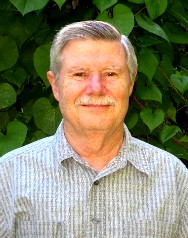 Genealogy
has been a hobby of mine for 10 years, yet my family tree on Ancestry.com is private. I
only share with other genealogy hobbyists after warning them about entries that need additional
evidence. But I do want to share my findings with everyone, minus the parts that could be
wrong. Much of my tree was established by others who shared information with me, so an open
disclosure of what I’ve learned seems like the right thing to do. Genealogy
has been a hobby of mine for 10 years, yet my family tree on Ancestry.com is private. I
only share with other genealogy hobbyists after warning them about entries that need additional
evidence. But I do want to share my findings with everyone, minus the parts that could be
wrong. Much of my tree was established by others who shared information with me, so an open
disclosure of what I’ve learned seems like the right thing to do. I’m in the process of entering the semi-certain part of my tree into the Family Tree section of FamilySearch.org. Using that site, you can share your tree without anyone needing a paid subscription. FamilySearch trees are built with collaborative information entry: anyone can sign up for a username to view, edit, or add to trees. 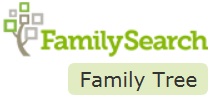 A
happy bonus comes when you see another person has already entered their connection to an
ancestor you share. A
happy bonus comes when you see another person has already entered their connection to an
ancestor you share.Soon after I started entering my tree into FamilySearch, I was lucky enough to find my great-grandparents already there, entered in 2016. Attached to them was a string of their children, siblings of my grandmother, Anna Perschy. One child listed surprised me though. I thought I had already found all of grandmother Perschy’s siblings. But Lucas Perschi, born 30 August 1867 in Farkasdifalva (Neumarkt an der Raab), was a surprise sibling. However, the LDS online (digitized) film for the Sankt Martin an der Raab parish showed that Lucas was not the child of my great-grandparents. The Lucas born on that day in Farkasdifalva was Lucas Puntigam, born in the same house where my great-grandmother was born, but to different parents. There are a few ways of dealing with errors in FamilySearch Family Tree. Lucas could be deleted, eliminating him completely. Or his connection to his incorrect parents could be severed, leaving him dangling alone, parentless. Hoping to resolve the issue jointly, I sent a message to “jlawson2,” the person who had entered Lucas into the FamilySearch Family Tree back in 2016. After three months without a response I talked to local LDS librarians, who advised patience and a second message to “jlawson2,” proposing a change to the entry for Lucas. It seems harsh to toss Lucas from my tree without placing him a tree of his own. I was able to find four records involving his family: baptisms of Lucas and two siblings plus the death record for one of those siblings. Children of Josephus Puntigam and Maria Latternegg: Veronica, born 9 February 1863 Rosalia, born 12 September 1864; died 1 November 1866 Lucas, born 30 August 1867 The Puntigam family was not prosperous. Josephus Puntigam was either an “inquilinus” or “subinquilinus” (tenant or subtenant) in those four records, while living in three different addresses in a span of just four years. The Puntigam and Latternegg surnames do not appear in other parish entries. Perhaps they were migrant workers. If no one comes forward to discuss Lucas before June, I plan to move him to a mini-tree made from those four records found for his family. Five people will be included in that tree, Lucas, his two siblings and his parents. I found no other records for that family. The ID number associated with Lucas, L2GB-TKL, will stay the same, but his name will change from Lucas Perschi to Lucas Puntigam in FamilySearch. Errors in family trees are common, and for lots of reasons. For one thing, handwritten records can be hard to read. My best guess for the mother’s maiden name is Latternegg. The LDS FamilySearch index lists the three Puntigam family baptism records with amusing dissimilar variations for both parents’ surnames. The priest would have been unfamiliar with those surnames because they were not surnames of other people within the parish, so the actual surnames in the records do differ. Add to that the transcription problem faced by the volunteers building the index, and this is what you find in the index (with what I read from the record image in parenthesis): 1863 baptism entry 17 for Veronica: https://www.familysearch.org/ark:/61903/1:1:XKKQ-57W Father's Name: Josephus Purliyan (Purtigam) Mother's Name: Maria Lasinag (Latinag)  1864 Baptism entry 104 for Rosalia: https://www.familysearch.org/ark:/61903/1:1:XKKQ-RHG Father's Name: Josephus Postiger (Pustigam) Mother's Name: Maria Latlincz (Lottineg) 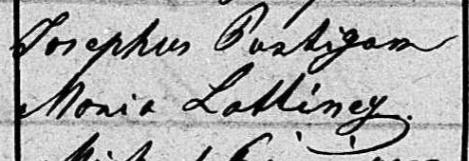 1867 Baptism entry 88 for Lucas: https://www.familysearch.org/ark:/61903/1:1:XKKQ-YZ8 Father's Name: Josephus Puntiganz (Puntigám) Mother's Name: Maria Latter (Latternegg) 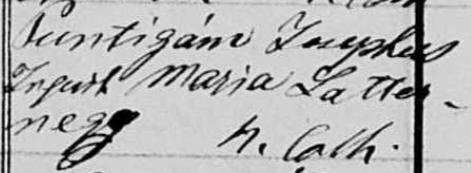 [Side note: When I re-read the baptism records for this article, all I could see for the father’s surname was 'Puntigam.' But now that I think about my first viewing of those records, I did not see it as anything close to 'Puntigam' until I read the death record of his daughter Rosalia, where the 'Puntigam' spelling was clearer. Now it’s fixed in my brain, what psychologists refer to as 'confirmation bias,' where all you see is what you already believe. I'm not sure I did much better than the LDS indexing volunteers in my first readings!] Errors live forever on the internet. Worse yet, they multiply like bunnies! 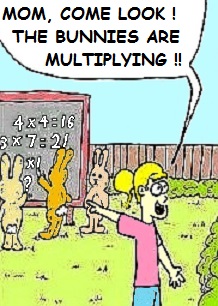 In
this case I believe the baptism of Lucas was misread in 2006 by a researcher who was looking
into every baptism record in the parish that involved a person named Maria Zotter. That
work, freely shared in the RootsWeb World Connect database, appears to the source of the
2016 FamilySearch entry, perhaps by way of one of several Ancestry.com trees that
repeat the error. In Lucas’s baptism record, the mother’s surname was split (hyphenated) across
two lines (see above), a third reason for errors, and the main reason the name looked like “Zotter”
to some people. In
this case I believe the baptism of Lucas was misread in 2006 by a researcher who was looking
into every baptism record in the parish that involved a person named Maria Zotter. That
work, freely shared in the RootsWeb World Connect database, appears to the source of the
2016 FamilySearch entry, perhaps by way of one of several Ancestry.com trees that
repeat the error. In Lucas’s baptism record, the mother’s surname was split (hyphenated) across
two lines (see above), a third reason for errors, and the main reason the name looked like “Zotter”
to some people. Here’s a link to the 2006 RootsWeb entry that likely was the original error: wc.rootsweb.ancestry.com/cgi-bin/igm.cgi?op=GET&db=katusz&id=I2013 There actually was a Maria Zotter living in house 32 at that time, my great-grandmother, Maria Zotter (1837-1918), daughter of the homeowner, János Zotter. Maria had her first three babies in that home, baptized with the Zotter surname, illegitimate. Maria married Johann Perschy in 1868 soon after his father died, with Johann inheriting house 80. After marrying Johann Perschy, Maria had six more babies in house 80, among them my grandmother, Anna Perschy (1876-1952). The pattern of illegitimate births at the home of the mother, followed by marriage once the father had acquired a home of his own, is a pattern I’ve seen other times in my genealogy research. Overpopulation may be the cause of that pattern; just too many people for the number of farms. The situation where there were two Maria's living in house 32, one with the surname Zotter, and one with a surname that could be misread as Zotter, caused the error that eventually placed Lucas in my FamilySearch tree. That error was inside a wonderful RootsWeb database, “The Lehrner/Ropposch/Bauer/Tecza Families,” that had greatly helped me build my family tree. Researching a family tree would be much more difficult without people who share work like that. The LDS FamilySearch Index, despite all of its misreadings of those handwritten parish records, is also a help to genealogy research. You have to check all sources though, which is much easier now that LDS has digitized most of the Burgenland church and civil records. But even primary sources like the parish records can contain errors, such as the priest entering names differently into the parish records each time. Further, the records filmed and digitized by the LDS are actually secondary sources, being images of a transcribed copy sent to the Hungarian government. Genealogy would not be as much fun if it was easy. |
||||||||||||||||||||||||||||
3) USING THE CHROMOSOME BROWSER AND “HOT” DNA SEGMENTS TO IDENTIFY DISTANT COUSIN MATCHES (by Frank Paukowits and Jane Horvath) The Chromosome Browser is one of the more important tools available to people researching their genealogy through the testing of autosomal DNA. Applied correctly, it can provide critical information to help verify relationships in your family tree. Moreover, once you get comfortable using this tool, it is not complicated to deploy with reasonable expectations for successful outcomes. FamilyTreeDNA (FTDNA), which sponsors the Burgenland DNA Project, provides each person who has had an autosomal test with information related to their chromosomal structure. This data is included in the Chromosome Browser, to which there is a link on the participant’s homepage. The Browser enables participants to compare their DNA with known relatives and other members who have been found to share matching DNA. Through this process, someone can find out, in graph format, where matches occur in the chromosomes. It will show the length of the matches in centiMorgans (cM), along with their locations, at varying thresholds. Further, you can secure details on up to five people at a time, which may help to locate common relatives among your matches. This can be very helpful in researching your family connections. While locating a 2nd cousin shouldn’t require much more than comparing your own family tree to the surnames of your match’s great-grandparents, the Chromosome Browser can prove quite useful to help identify the connection to predicted 4th cousins …or even further. However, there are some limitations. Since a large portion of our matches will fall into this “4th to distant” category, and many people haven’t located their 7th, let alone 19th great-grandparents, one should first try to figure out if these matches are genetically relevant. Fortunately, geneticists have identified hot and cold regions within the chromosomes that may help estimate how far back someone needs to look to find a shared ancestor. The hot spots are the areas where recombination occurs with a high degree of frequency, and conversely, the cold spots recombine at a much less frequent rate. Recombination refers to the way portions of DNA change with each generation. For example, if you and your son each submit a DNA sample and view your shared matches, you’ll notice that (with some exceptions) a given chromosome segment you share with a particular match will be the same size or larger than the segment your son may share with that same person. For example, if you share a 15 cM segment with person A and your son shares that identical 15 cM segment with A, odds are that the segment is in a cold spot. It’s cold because it hasn’t changed at all from your generation to his. This particular segment could indicate a common ancestor with person A going back much further than normally expected. Conversely, if you share a 50 cM segment match with person B and your son shares only 30 cM of that same segment with B, it can be projected by the loss of 20 cM that this segment exists in a hot region. Under these circumstances it would much more likely be from a recent ancestor. A 2013 studyi of genetic divergence conducted by researchers at Penn State University produced a mapii of these regions, as shown below: 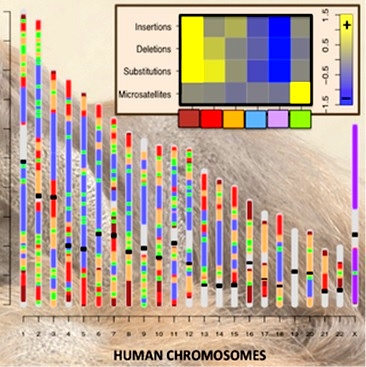 Unfortunately, this image in its original state isn’t very useful for genealogical comparisons. For the purpose of analyzing group member data, the map has been altered to match the proportions of the Chromosome Browser on the FamilyTreeDNA site. The neutral regions have been removed and only the hot and cold regions remain, as shown in the next image. 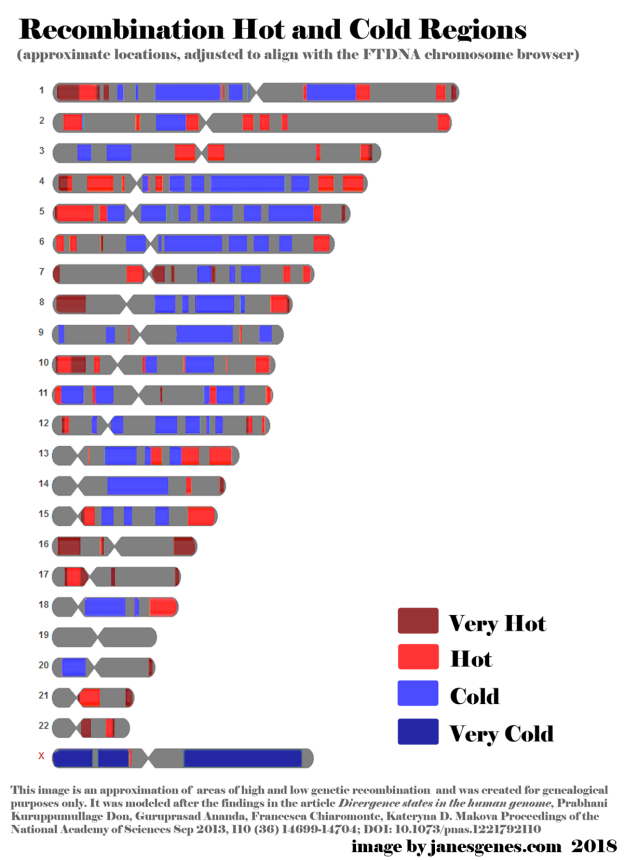 Though these regions do not always behave as expected, for the most part, understanding which regions are hot and which are cold may help to identify which 4th cousins are likely to be found and which are not. For the sake of identifying 3rd and 4th cousins, small segments occurring in the blue regions are theoretically less significant than similarly-size segments in red regions. However, if you have been able to trace your lineage back to 5th and 6th great-grandparents, you may be lucky enough to identify a distant cousin in one of these cold spots where recombination is less frequent. When comparing different relatives on the Chromosome Browser, a process called triangulation is used to calculate common ancestors. In this process, the place where the matching bits of DNA appear in the graph is critical. Invariably, you will have many people who have matches with you in different places on the graph. While these people would all be related to you, they won’t necessarily be related to one another. The key to performing a successful triangulation is ensuring that each person in the comparison shares an overlapping segment in the same place on the same chromosome. True triangulation uses at least three people who are not very close relatives and who all match each other on the same place on a particular segment of DNA. When working with medium to large segments (>15 cM), these bits of DNA merely need a significant overlap, but trying to find a 4th cousin may require comparing smaller segments. In this case, a good indicator of a true match is a segment with identical start and/or endpoints. (Note: this will only occur if you and your matches have all tested with the same company. In the example, all three participants submitted their DNA samples directly to FTDNA.) An analysis was done comparing Project members Linda Issowits and Frank Seier to group administrator Frank Paukowits. All three participants had the Jautz name from Tobaj in their family lineages and FTDNA predicted they were DNA matches to each other. By comparing where their DNA matched on the Chromosome Browser, a common segment was found to be shared by all three. 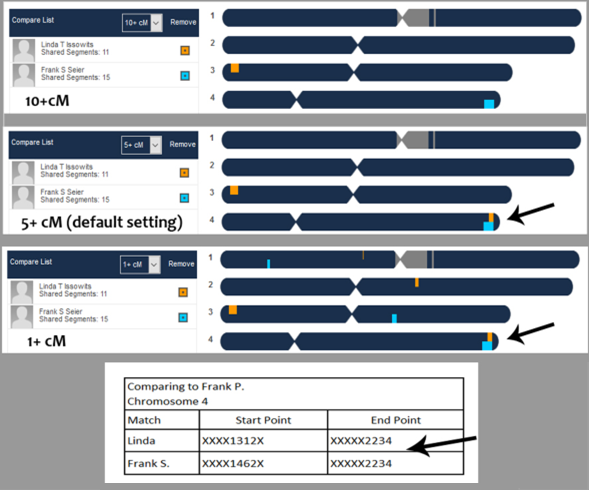 The segment shared by Frank P and Frank S is 17.6 cM and Linda’s segment is 7.6 cM, but all three participants share the same identical endpoint on this segment. As previously mentioned, a shared identical start and/or endpoint is very important when analyzing these smaller segments. This match not only shows an overlapping segment, but also shows a bit of common DNA that ends at the same exact genetic location. Because all three participants had adequate family trees, it has been ascertained that Frank P, Linda, and Frank S, are all fourth cousins to one another, and that their common ancestors are 3rd great-grandparents György Jautz (1788-1871) and Theresia Heiliman (1788-1848). Indeed, the use of the Chromosome Browser, coupled with the analysis of the family trees, enabled this result. Below is how this triangulation looks with all three family trees combined into one. 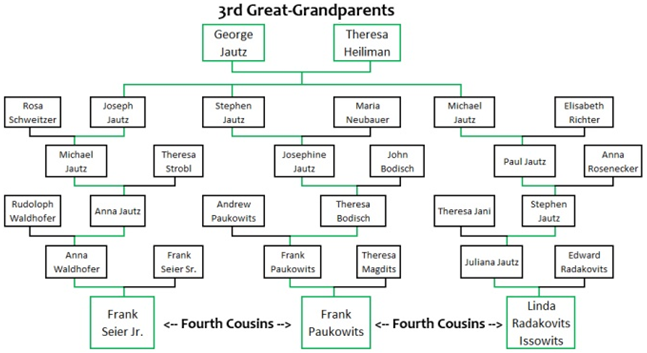 * The green lines in the chart represent the flow of common DNA from generation from generation. The next step would be to download the cM data for all matches and search for any others with identical start or end points on chromosome 4. They very likely share a Jautz and/or Heiliman ancestor. References: i Don, PK, Ananda, G, Chiaromonte, F, & Makova, KD (2013). Segmenting the human genome based on states of neutral genetic divergence. Proceedings of the National Academy of Sciences, 110(36), 14699-14704. doi:10.1073/pnas.1221792110 ii New Characterization of the Human Genome's Ability to Mutate Catalyzes Biomedical Research. (n.d.). Retrieved March 28, 2018, from http://science.psu.edu/news-and-events/2013-news/Makova8-2013. |
||||||||||||||||||||||||||||
4) NOT ALL RESEARCH IS EASY... We had a couple of difficult research problems come our way recently and, though I wish we could say we helped the new members resolve all of them, there was only partial success. This article discusses one of those efforts and, as one part of it ended up unresolved, I'll share it with you readers to see if you might know more. The new member in question is Ronald August Weber, of Northville, Michigan. His surnames of interest are WEBER and DAX from Jennersdorf and ZIEGER from Gritsch and Welten; all emigrated to Pittsburgh, PA ...and some returned to Jennersdorf, which is where the research really gets difficult. Ron writes: Searching for ancestry information on August Weber and Rosa Dax from Jennersdorf; met and were married in Pittsburgh, PA, 10/13/1903; had a son August Weber Jr. on 8/08/1904 before returning to Jennersdorf in 1906. Rosa died in 1906 and August Sr. remarried and had other children. August Weber Jr. returned to Pittsburgh on 5/14/1928 to live out the remainder of his life. He married Marie Zieger (of Gritsch). Also searching for family ancestry background regarding Joseph Zieger born 10/05/1887 in Welten. He married Maria (Mary) Zotter, born 04/02/1892 in Gritsch. They arrived in the USA on 10/07/1922 and settled in Pittsburgh, PA. Was told Joseph once owned a farm in Gritsch. That's a lot of information, so I unpacked it and attacked the Weber/Dax part of it first and the Zieger/Zotter part later. Although the messages exchanged over these separate investigations actually overlapped, for ease of understanding I'm going to present all of the Weber story first. I wrote: Hi Ronald, Welcome to the BB. I’ve been trying to find your Weber family back in Jennersdorf in the 1906 era... but I’m finding nothing. Thus I have a few questions and comments... Jennersdorf was both a town and a district... when you say they went back to Jennersdorf, which did you mean? I have been looking in the Jennersdorf town records... but there are lots of other towns in the district. Second, when you say Rosa died in 1906, did she die in Pennsylvania before August returned to Burgenland in 1906, or in Burgenland after both returned? Third, you say August remarried... do you know how soon (what year) after his return to Burgenland? Fourth, what years were August Sr. and Rosa born? Fifth, there is a 1900 passenger manifest listing for an August Weber heading to Allegheny Co, PA, that says he came from Raks (quite near Jennersdorf town); is this August Sr.?
I’m looking for something to help me narrow down the time spans and places for looking for
the Webers. I’ve checked Jennersdorf town death and marriage records for 1906-1909 for
Rosa’s death or August’s remarriage and have found neither. |
||||||||||||||||||||||||||||
5) HISTORICAL BB NEWSLETTER ARTICLES Editor: This is part of our series designed to recycle interesting articles from the BB Newsletters of 10 years ago. Below is an article from 10 years ago [with an added editorial note by me] where Gerry tried to estimate the number of living Burgenländers (immigrants and descendants) alive in the US and Canada. THE BURGENLAND BUNCH NEWS - No. 174 April 30, 2008 SIZE OF BURGENLAND FAMILY DATABASE? A recent question concerned the number of possible people in the US or Canada with Burgenland origins. While no "official" number is available, we can (1) ask ourselves how many are members of Burgenland organizations, and then (2) try to do some sort of statistical guestimate. The first is easy, we just add our 1,600+ and the BG members and maybe those who have posted queries to our query board; total, less than 7,000. The second involves some mental gymnastics. We know we had 40,000 Burgenland immigrants 1880-1924, with about a 25% return or a net of 30,000. To that we can add about 2,000 before 1880 and maybe as many as 15,000 after 1924. A guestimate of 47,000-50,000 immigrants to-date. Assuming 25 years per generation, a family birth rate of 2, and an average actuarial life span of no more than 75 years, we have geometric totals... 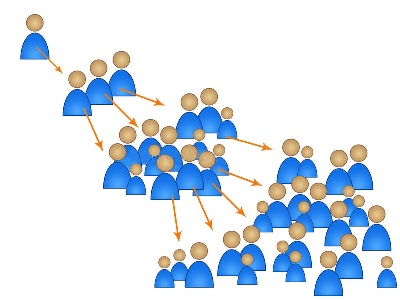 From the earlier migration (1880-1924): The 32,000 had 64,000 children (who in turn had 2 each, etc.) 1924: 64,000 (none still living) who had 1949: 128,000 (half still living?) who had 1974: 256.000 (all still living?) who had 1999: 512,000 (all still living?) Total possible living descendants from first migration 832,000. From later migration (1924-forward): 15,000 less 25% return equals 11,250, who had 2 children each or 22,500... 1949: 45,000 (half still living?) who had 1974: 90,000 (all still living?) who had 1999: 180,000 (all still living) Total possible living descendants from second migration 292,500. Total to-date: 832,000 + 292,500 = 1,124,500 or 1.2 million (rounded) descendants with a possible link to the Burgenland. Given we have about 5,000 BB and BG members, meaning about 0.4% of the possibles, we have lots of people still to contact! You can adjust these estimates by increasing or decreasing family size, and many immigrants married other immigrants (which would remove one immigrant per marriage from the family estimates, etc.), but I'd estimate that we are still talking about ONE MILLION possible BURGENLAND PEOPLE involved with the US and Canadian population. Of course many descendants today may not realize that, giving our work major importance in linking today's populations with the Heimat. That 40,000 immigrant estimate and the 25% return rate are solid figures from emigration studies. The rest is just conjecture. [Ed. note: Actually, if you assume all immigrants married other immigrants, it would cut Gerry's estimates dramatically. For example, it would be 16,000 pairs having 32,000 children, who, if paired up (16,000 pairs), also had 32,000 children, etc., giving a calculated total of only 80,000 living Burgenländers in the US/Canada from the earlier migration. Calculating the later migration similarly leads to a 28,125 count, bringing the total to only 108,125. Many emigrants married other emigrants (or came over with spouse and family), but the tendency to marry within the group faded over time. I'd also speculate that a family size of 2 is far too small for the earlier generations (even if you assume not all children eventually married and had progeny), so the real count likely falls somewhere in the middle of the 100,000 to 1,000,000 range. Still, the BB/BG membership remains under 1% of the possibles.] |
||||||||||||||||||||||||||||
6) ETHNIC EVENTS LEHIGH VALLEY, PA Saturday, May 5: Maifest at the Reading Liederkranz. Info: www.readingliederkranz.com Sunday, May 6: Reading Liederkranz Singers' Maifest German Church Service at St. John's Lutheran Church in Reading. Info: www.readingliederkranz.com Sunday, May 6: Maibaumtanz at the Coplay Sängerbund. Music by the Joe Weber Band. Info: www.coplaysaengerbund.com Saturday, May 12: Maitanz at the Lancaster Liederkranz. Music by the Josef Kroboth Orchestra. Info: www.lancasterliederkranz.com NEW BRITAIN, CT Friday, May 4, 7 pm: Heimat Abend. Austrian Donau Club, 545 Arch Street, $3. Music by Frank Billowitz. Friday, May 18, 7:30 pm: Heurigan Abend. Austrian Donau Club, 545 Arch Street, $3. Music by Schachtelgebirger Musikanten. ST. LOUIS, MO Sunday, May 6, 1-5 pm: St. Louis Burgenländer Gathering at the Community Center Cafeteria of Holy Name of Jesus Catholic Church, 10235 Ashbrook Dr., St. Louis, MO. |
||||||||||||||||||||||||||||
7) BURGENLAND EMIGRANT OBITUARIES John Perl  John
Perl, of Edmonton, Alberta, Canada, passed away March 27, 2018 at the age of 90. John
Perl, of Edmonton, Alberta, Canada, passed away March 27, 2018 at the age of 90.Born in Gaas, Austria, John emigrated to Edmonton in 1961, where his wife and three sons joined him in 1962. John is survived by his wife of 66 years, Berta Perl; three sons, Gary (Kinga), John and Chris (Karin); seven grandchildren, Kelly (Daniel), Trevor (Dani), Katherine (Chris), Elissa, Alex (Kim), Stefan and Thomas as well as one great grandson, Dexter. He leaves one sister, Wilma Wenzel of St. Michael, Austria. John was predeceased by his infant daughter, Silvie. John will be remembered as a quiet, thoughtful, hard-working man, for whom family was everything. There will be a private family celebration of John`s life at a later date. In lieu of flowers, donations may be made to the Alzheimer`s Society of Alberta, 14925 -111 Ave., Edmonton, AB, T5M 2P6. Published in The Edmonton Journal on Mar. 31, 2018 Joseph J. Deutsch  Joseph J.
Deutsch, age 97, a resident of Peekskill, New York, for 70 years, passed away at home on March
30, 2018. Joseph J.
Deutsch, age 97, a resident of Peekskill, New York, for 70 years, passed away at home on March
30, 2018.Born on October 28, 1920 in Poppendorf, Austria, he was a son of the late Franz and Gisela (Györi) Deutsch, and married Ethelmay 'Effie' Tozier in 1946. He is survived by his sons, Charles 'Chip' (Christine) Deutsch, and Robert 'Bob' (Kathy) Deutsch, his daughter, Carole Mayers, and 4 grandchildren. Joe was predeceased by his wife Effie and his daughter, Peggy Ann Deutsch. He was a chocolatier at the Godiva Chocolate Company in NYC. He was renowned as a photographer of the Hudson Valley region. A Memorial service will be held on Saturday, April 7th at 11:00 AM at the Peekskill Presbyterian Church, 705 South St, Peekskill, NY 10566. Donations to the Hope For Youth Foundation (P.O. Box 8; Buchanan, NY 10511) or the Peekskill Presbyterian Church will be appreciated by the family. To offer condolences, please visit: eocurryfuneralhome.com. Published in the The Journal News on Apr. 4, 2018 Paula Farkas (née Ribarich)  It is
with heavy hearts that we announce the passing of our dear wife, mother and grandmother, Paula
Farkas, at Dorothy Ley Hospice on Tuesday, April 10, 2018. Native of Kroatisch Minihof, Austria. It is
with heavy hearts that we announce the passing of our dear wife, mother and grandmother, Paula
Farkas, at Dorothy Ley Hospice on Tuesday, April 10, 2018. Native of Kroatisch Minihof, Austria.
Loving wife of Frank for 66 years. Devoted mother of Agnes (Douglas) Dilley and Richard. Cherished Omama of Mitchell, Miguel (Gloria) Dilley, Christina (Mike) Wilson and proud great-grandmother of Lina, James and Edward. Survived by her brother Leo Ribarich of Austria. Predeceased by her brother Mathias. Paula will be sadly missed by her nieces, nephews family and friends. Resting at Newediuk Funeral Home, Kipling Chapel, 2058 Kipling Avenue, Toronto (north of Rexdale Blvd.) on Sunday from 4–7 p.m. Funeral service will be celebrated on Monday, April 16, 2018 in the funeral home chapel at 10 a.m. Interment: Queen of Heaven Cemetery. As expressions of sympathy, donations to Dorothy Ley Hospice or the Canadian Cancer Society would be greatly appreciated by the family. Online condolences at newediukfuneralhome.com. Published in the Toronto Star on Apr. 14, 2018 John Mulzet  John
Edward Mulzet, 95 years, of Fogelsville, Pennsylvania, passed away at home on Easter morning,
April 1, 2018. John
Edward Mulzet, 95 years, of Fogelsville, Pennsylvania, passed away at home on Easter morning,
April 1, 2018.Johnny was the loving husband of Kathryn "Kitty" Mulzet for 62 years until her passing on January 29, 2011. Together, they raised five children. Born in Tschanigraben, Burgenland, Austria, he was the son of the late Josef and Rosina (Hutter) Mulzet, and late stepmother, Hedwig (Hammerl) Mulzet. Josef emigrated to the US through Ellis Island, NY on March 3, 1923, later bringing Rosina with young Johnny and his older sister Rose. Johnny grew up in Coplay and Allentown and then served in the Army during WW-II while stationed in Hawaii after the Pearl Harbor attack. Later, as a carpenter, Johnny worked in furniture manufacturing and then at Bethlehem Steel from which he gratefully retired in 1981. After retirement, Johnny had already become an expert clammer and fisherman. With his friends, and wife and family in tow, Johnny spent many summer days on his boat, mostly in Little Egg Harbor Bay near Long Beach Island. Nearby and for over 40 years, he often joined family and friends around campfires at "the camp," his base for fishing where he and Kitty kept a summer camper at Sea Pirate Light in West Creek NJ. Over the years, and with intimate knowledge of the bay's waterways, Johnny harvested thousands of clams and hundreds of fluke -- always sharing his bounty of seafood, tomatoes, and vegetables from his large garden. During winters, Johnny and Kitty became talented folk artists -- he providing the wood designs and cuts, and Kitty providing the whimsical decorations. They exhibited their winters' work at area craft shows in the spring seasons, mostly in Roncocas Woods, NJ. In his final years, Johnny continued to live actively and independently at his home of over 60 years. Locally, he was well-known as "the Captain," the oldest regular member at the Fitness Plaza in Allentown where he exercised early mornings for 17 years until two weeks before his passing. Survivors: sons, John J. of Whitehall, Robert E. of Melbourne FL, Barry J. and wife Kami of Phoenixville; daughters, Linda S., wife of Matthew Pramik of Emmaus, and Janice A., wife of Stuart Smith of Cape Canaveral, FL; sisters, Helen of Breinigsville, Mary Ann of Allentown, Pat of Allentown, Linda of Breinigsville, and all late Rose, Frida, Ruth, and Rosemarie; grandchildren, Cali, Connor, and Jordan; great-grandchildren, Mia and Brooke. Services: 11 a.m. Saturday, April 7 at Keller Funeral Home, 1018 Church Street, Fogelsville with the Rev. Nelson Quiñones officiating. Visitation: 10 to 11 a.m. Interment at Resurrection Cemetery. Online condolences may be offered to the family at www.KellerFuneralHomes.com. Published in Morning Call on Apr. 5, 2018 Mary Walits (née Kremsner)  Mary
Walits, 98, of Wayne, New Jersey, passed away peacefully on April 8, 2018. Mary
Walits, 98, of Wayne, New Jersey, passed away peacefully on April 8, 2018.Born in St. Michael im Burgenland, Austria, she was a daughter of the late Johann and Gisela (Hanzl) Kremsner. Mrs. Walits came to the United States in 1936 and settled in Passaic, living there for most of her life before retiring to Lyndonville, NY and more recently had been living in Wayne. Prior to retiring, she had been employed as a Presser with White Laundry in Passaic. She was a former parishioner of Holy Trinity RC Church in Passaic and St. Joseph RC Church in Lyndonville, NY and was a member of the Burgenländer Sick and Death Benefit Society. Mrs. Walits was predeceased by her husband, Frank Walits, in 1994; by her daughter, Veronica Dudash and son-in-law, Frank Dudash; and by her two sisters: Rose Marosits and Veronica Kremsner. She is survived by her son, Frank Walits and his wife, Maryann, of Wayne; her two brothers: Johann and Josef Kremsner, both of St. Michael, Austria; three grandchildren: Suzanne Walits-McConeghy and her husband, Robert; Joanne Walits-Danckwerth and her husband, John and great-granddaughter, Jessica Danckwerth; and Diane Dudash-Dykes and her husband, Jody. Visiting will be Friday from 10:30-11:30 am with a funeral service to be held at 11:30 am at Bizub-Quinlan Funeral Home, 1313 Van Houten Avenue, Clifton. Private cremation to follow. In lieu of flowers, memorial contributions to Holy Trinity RC Church, 226 Harrison Street, Passaic, NJ 07055 would be appreciated. Published online on Apr. 8, 2018 courtesy of Tributes.com |
||||||||||||||||||||||||||||
| END OF NEWSLETTER (Even good things must end!) |
||||||||||||||||||||||||||||
|
Burgenland Bunch Newsletter, copyright © 2018 by The Burgenland
Bunch |
 News
News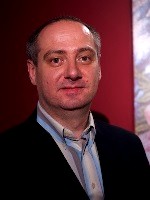 Unlike
other archives, I am a "one-man" operation here. The digitization is carried out in the Györ
mother diocese. We work alphabetically and are at the letter "H." Almost every matriculation
book has to undergo a restoration, half of which has been done since 2009.
Unlike
other archives, I am a "one-man" operation here. The digitization is carried out in the Györ
mother diocese. We work alphabetically and are at the letter "H." Almost every matriculation
book has to undergo a restoration, half of which has been done since 2009. Last
September, FamilySearch transitioned from its microfilm circulation services to its
current digital model. It currently adds over 300 million new images a year online from its
microfilm to digital efforts and its field operations in countries around the world. Here are
the reported image counts:
Last
September, FamilySearch transitioned from its microfilm circulation services to its
current digital model. It currently adds over 300 million new images a year online from its
microfilm to digital efforts and its field operations in countries around the world. Here are
the reported image counts: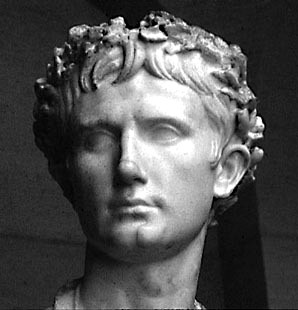 New
skies the exile finds, but the heart is still the same.
New
skies the exile finds, but the heart is still the same.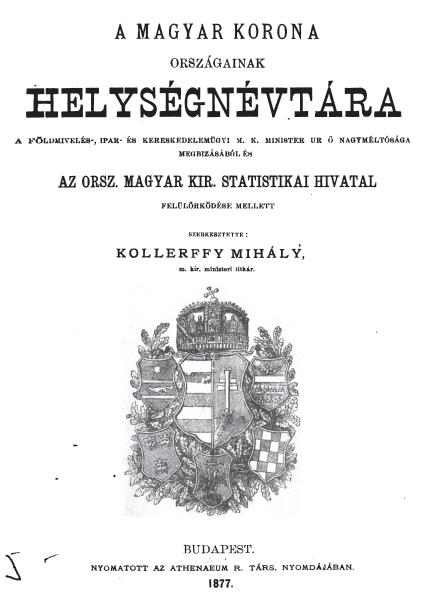 Hungarian
Gazetteers: A new feature has been added to the BB website, that being a page
that provides links to pdf files of the 1877, 1888 and 1913 Gazetteers of the Hungarian
Crown Lands, each titled "A Magyar [Szent] Korona Országainak Helységnévtára" in
Hungarian.
Hungarian
Gazetteers: A new feature has been added to the BB website, that being a page
that provides links to pdf files of the 1877, 1888 and 1913 Gazetteers of the Hungarian
Crown Lands, each titled "A Magyar [Szent] Korona Országainak Helységnévtára" in
Hungarian.  2018
St. Louis Burgenländer Gathering Set: Theresa McWilliams, the BB's St. Louis Research
Editor, has notified us that the next St. Louis Burgenländer Gathering has been
scheduled for Sunday, May 6, 1-5 pm at the Community Center Cafeteria of Holy Name of
Jesus Catholic Church at 10235 Ashbrook Dr., St. Louis, MO.
2018
St. Louis Burgenländer Gathering Set: Theresa McWilliams, the BB's St. Louis Research
Editor, has notified us that the next St. Louis Burgenländer Gathering has been
scheduled for Sunday, May 6, 1-5 pm at the Community Center Cafeteria of Holy Name of
Jesus Catholic Church at 10235 Ashbrook Dr., St. Louis, MO.  Update
for book "The Burgenländer Emigration to America": Here is this month's update on
purchases of the English issue of the 3rd edition of Dr. Walter Dujmovits' book "Die
Amerika-Wanderung Der Burgenländer."
Update
for book "The Burgenländer Emigration to America": Here is this month's update on
purchases of the English issue of the 3rd edition of Dr. Walter Dujmovits' book "Die
Amerika-Wanderung Der Burgenländer.".jpg) Grammeln
/ (Fried Pork Cubes)
Grammeln
/ (Fried Pork Cubes) Reminder:
We no longer have a "regular" source for Burgenland recipes. As evidenced above, a few readers
have shared favorite family recipes, and we do have a reserve for a couple of months now, but if
contributions stop coming in, we'll be begging again! So, please consider sharing your favorite
Burgenland recipes or recipe books with us. Our older relatives sadly aren't with us forever, so
don't allow your allow your favorite ethnic dishes to become lost to future generations. Send
your suggestions to BB Recipes Editor,
Reminder:
We no longer have a "regular" source for Burgenland recipes. As evidenced above, a few readers
have shared favorite family recipes, and we do have a reserve for a couple of months now, but if
contributions stop coming in, we'll be begging again! So, please consider sharing your favorite
Burgenland recipes or recipe books with us. Our older relatives sadly aren't with us forever, so
don't allow your allow your favorite ethnic dishes to become lost to future generations. Send
your suggestions to BB Recipes Editor,
